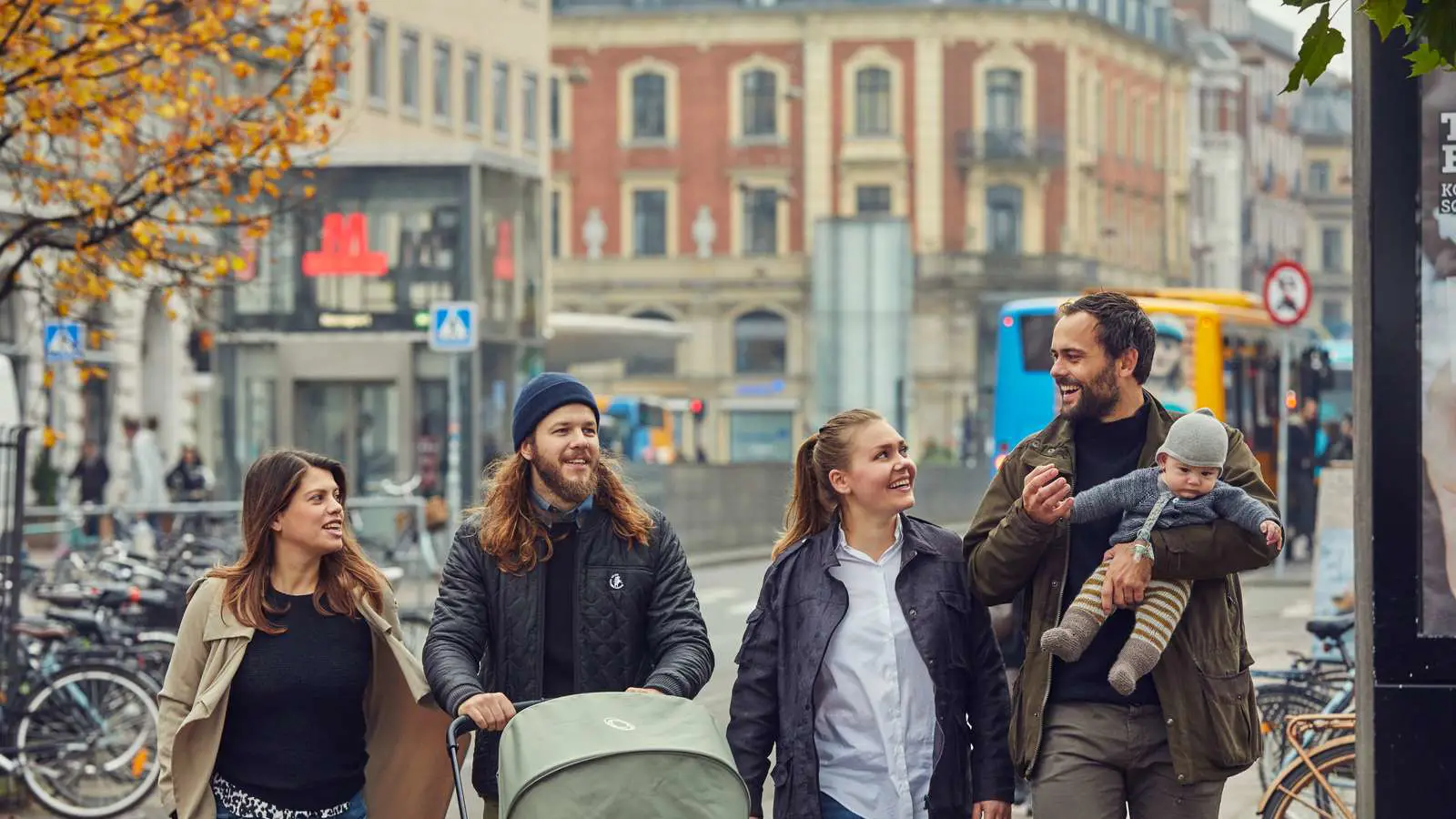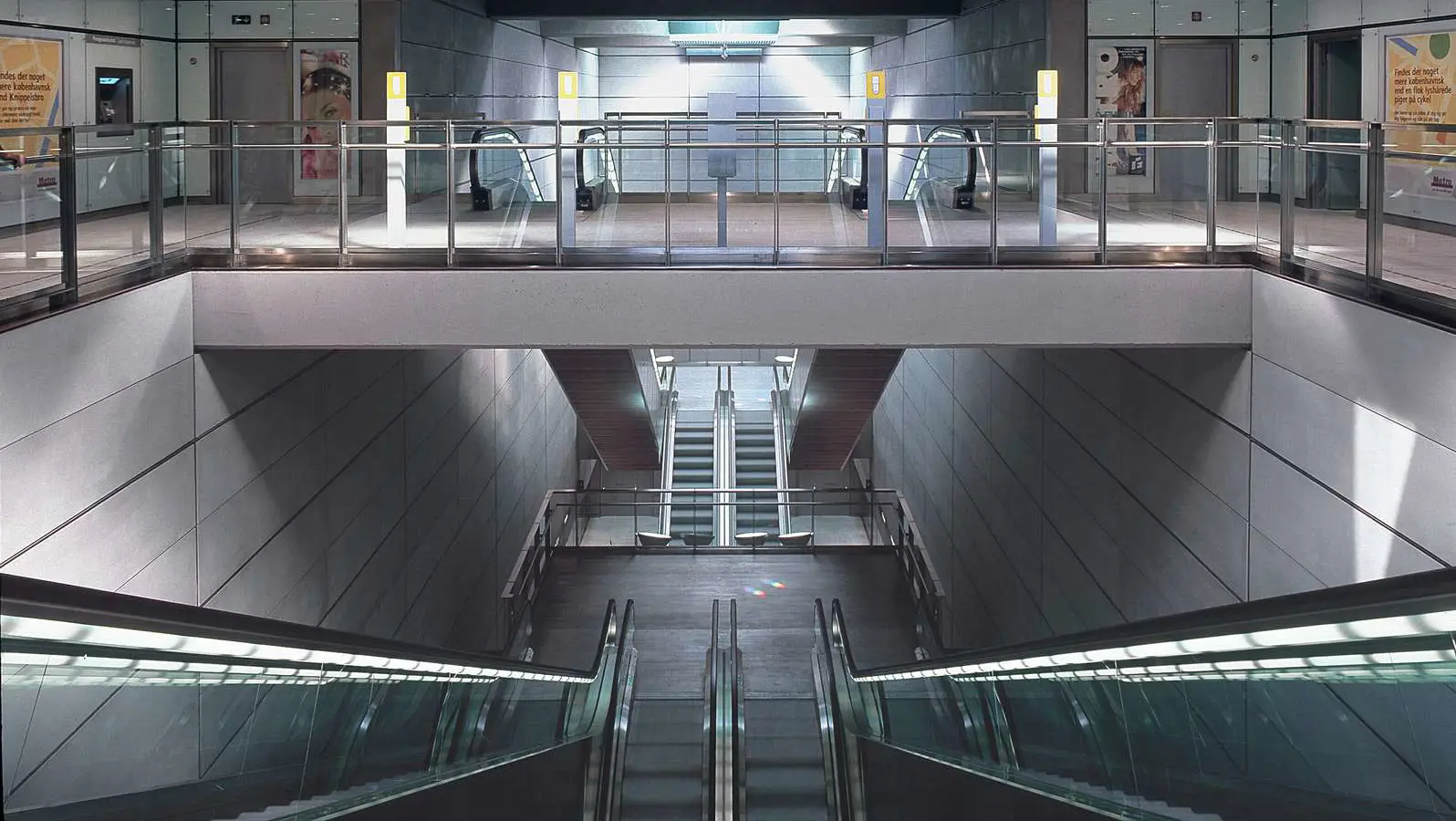The stations are characterised by simplicity and tightness in the lines
A part of the city
The fundamental design philosophy has been to establish smoothly operating Metro stations that give passengers ideal access conditions from street level to platforms.
Above ground stations
14 of the Metro's 44 stations are above ground and consist of glass and steel structures in a light design as to resemble the tunnel stations in functionality and design.


The underground stations of the Metro
On M1 and M2, nine of the 22 stations are situated below ground and are visible at ground level due to elevator towers and glass pyramids. The function of the pyramids is to guide daylight all the way down to the platform below. This creates pleasant natural light and saves energy.
On M3 Cityringen, all of the stations are underground, and on the M4 line, only Orientkaj is above ground. With very few exceptions on the M3 and M4 lines like Marmorkirken and Copenhagen South, the stations are all equipped with skylights, that serve the same function as in the older stations – to create a comfortable underground space and save energy during daytime.
The station squares are simple and functional
Just as the Metro will have a long service life, the design of the Metro will blend in with and enhance its urban surroundings – both in the existing city and in the new neighbourhoods, such as Ørestad, Nordhavn and Sydhavn. To achieve this delicate balance, the station squares – like the other parts of the Metro – are kept in classic, functional Scandinavian design, and the new stations on the M4 extension to Sydhavn and Valby have given the capital five new urban spaces.
Since Copenhagen is known for its strong bicycle culture, bicycle parking is possible at every Metro station with parking at the station squares.

